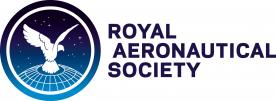 Integrating remotely piloted air systems (RPAS) into civilian airspace in Europe is not going to be easy. Official programmes are many, work is extensive, detailed and ongoing, but anyone expecting an early resolution is going to be disappointed. This was the picture gleaned from a series of presentations at last month’s RPASToday: Opportunities and Challenges conference, run by the Royal Aeronautical Society in London.
Integrating remotely piloted air systems (RPAS) into civilian airspace in Europe is not going to be easy. Official programmes are many, work is extensive, detailed and ongoing, but anyone expecting an early resolution is going to be disappointed. This was the picture gleaned from a series of presentations at last month’s RPASToday: Opportunities and Challenges conference, run by the Royal Aeronautical Society in London.
The Society’s annual RPAS conferences have become an important talking-shop for the burgeoning unmanned air systems community, particularly in the UK, where a forward-leaning regulator and some innovative aircraft operators have given the country a head-start in using RPAS for civilian aerial work.
Britain’s regulatory framework for RPAS operations is provided by a document calledCAP 722, published and periodically updated by the Civil Aviation Authority. In essence,CAP 722 mandates anyone seeking to fly an unmanned aircraft of under 20 kilograms for commercial purposes to obtain permission from the regulator. Strict limitations are placed on flights: the aircraft cannot be operated outside the pilot’s line of sight, must go no higher than 400 feet and cannot fly within 500 meters of buildings not under the direct control of the aircraft operator.
Permissions are issued on a case-by-case basis and there is a considerable degree of flexibility. Some cover a named operator to fly an aircraft type in different locations and on different dates for a period of time, and applications can be made to renew these when they expire; other permissions may restrict operators to a single flight in a single location on a stipulated date and time.
The CAA is able to act with a degree of local independence because European regulations, issued by the European Aviation Safety Agency (EASA), apply only to aircraft of 150 kg mass or greater. This independence has helped give Britain a more active small-RPAS sector than many other countries. According to figures presented at the conference by Mark Swann, the director of the CAA’s safety and airspace regulation group, 318 permissions were issued in 2013, and with 217 issued in the first five months of 2014, this year’s figure is likely to be higher.
The CAA is also able to regulate and authorize flights of RPASs that are over the 150-kg limit and are flown higher than 400 feet and beyond the operator’s visual line of sight, although these have to take place in segregated airspace. Two blocks of RPAS-ready airspace have been created in the UK but they remain largely unused. Swann described the reluctance to take advantage of the airspace provision as “very disappointing…I hope you recognize we’ve pulled out all the stops to make this happen,” he told an audience composed primarily of RPAS manufacturers and operators. “[The British Army RPAS] Watchkeeper is in the system and cleared to fly, but there are no civilian systems [weighing more than 150 kg] operating in the UK. I fully expected to have something big and beautiful flying in that airspace we set up by 2011, and it hasn’t happened.”
Source: AIN Online
